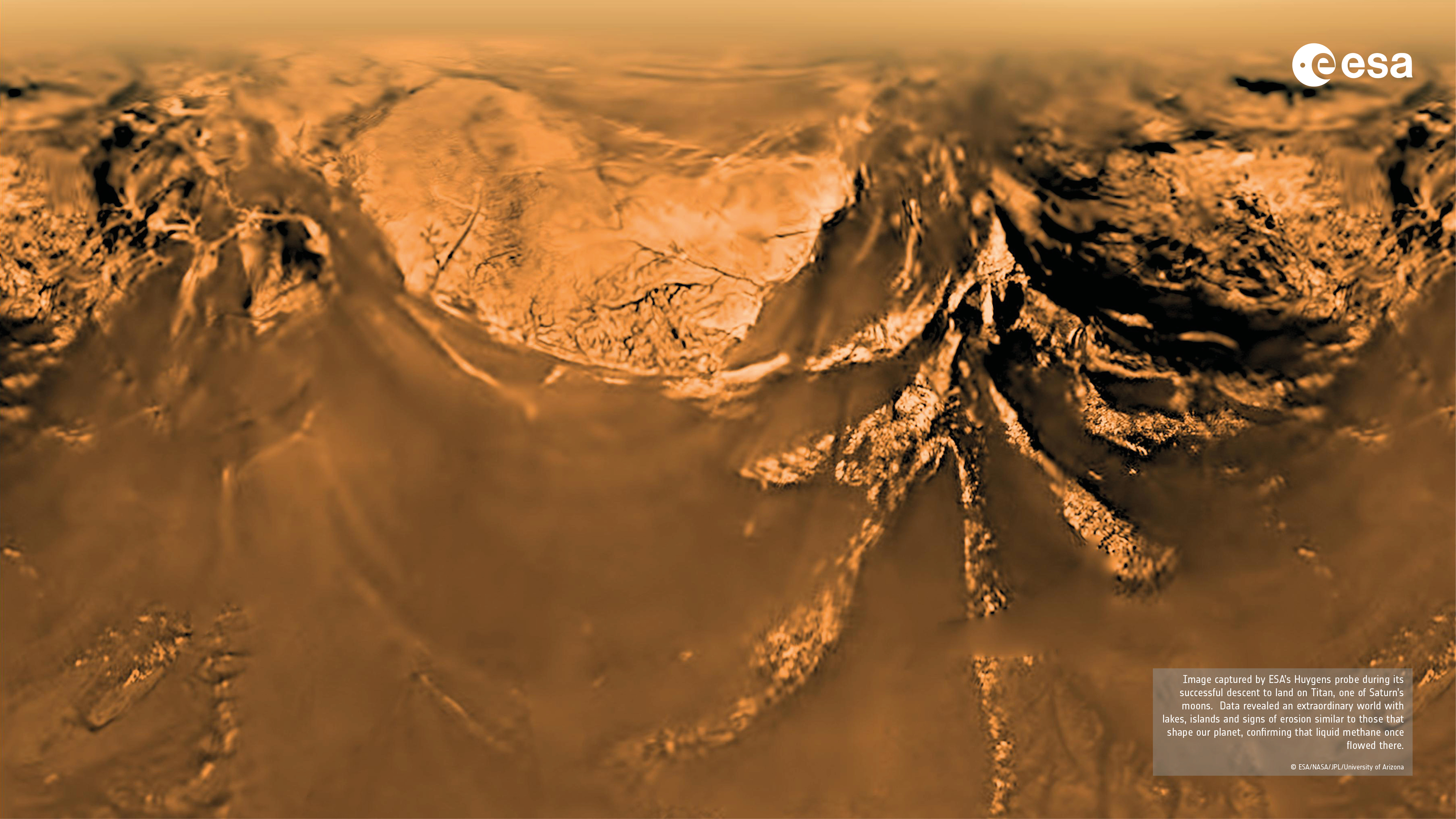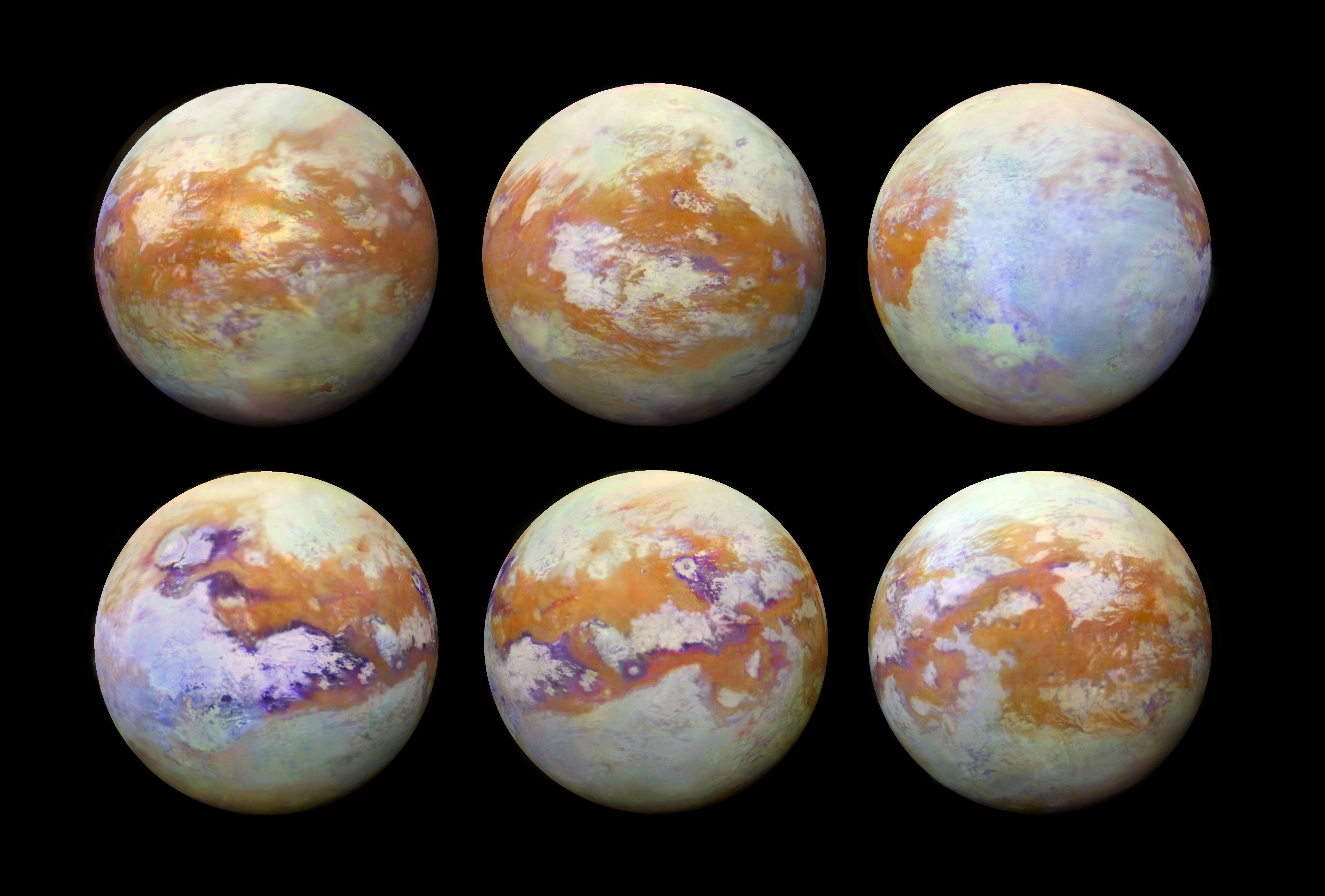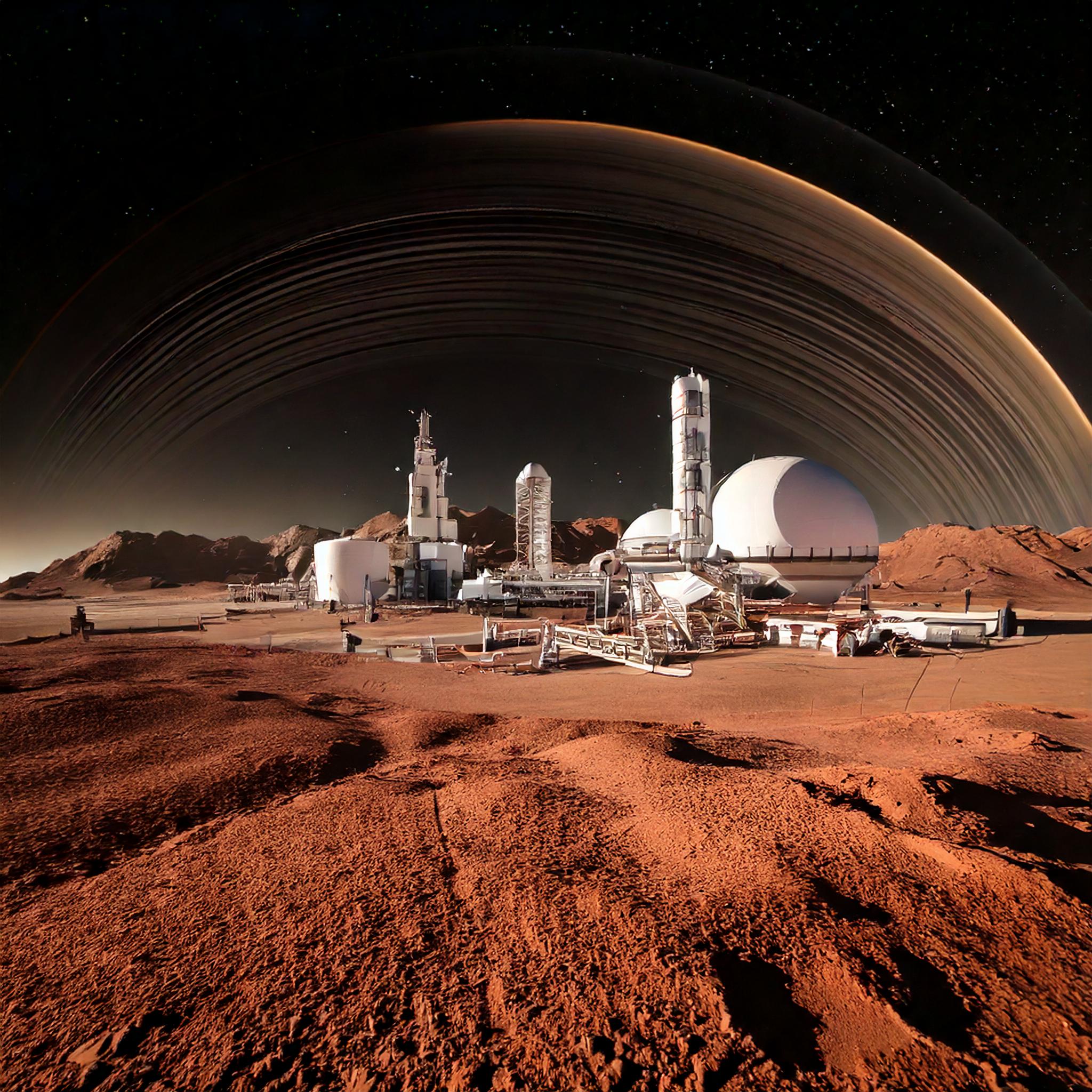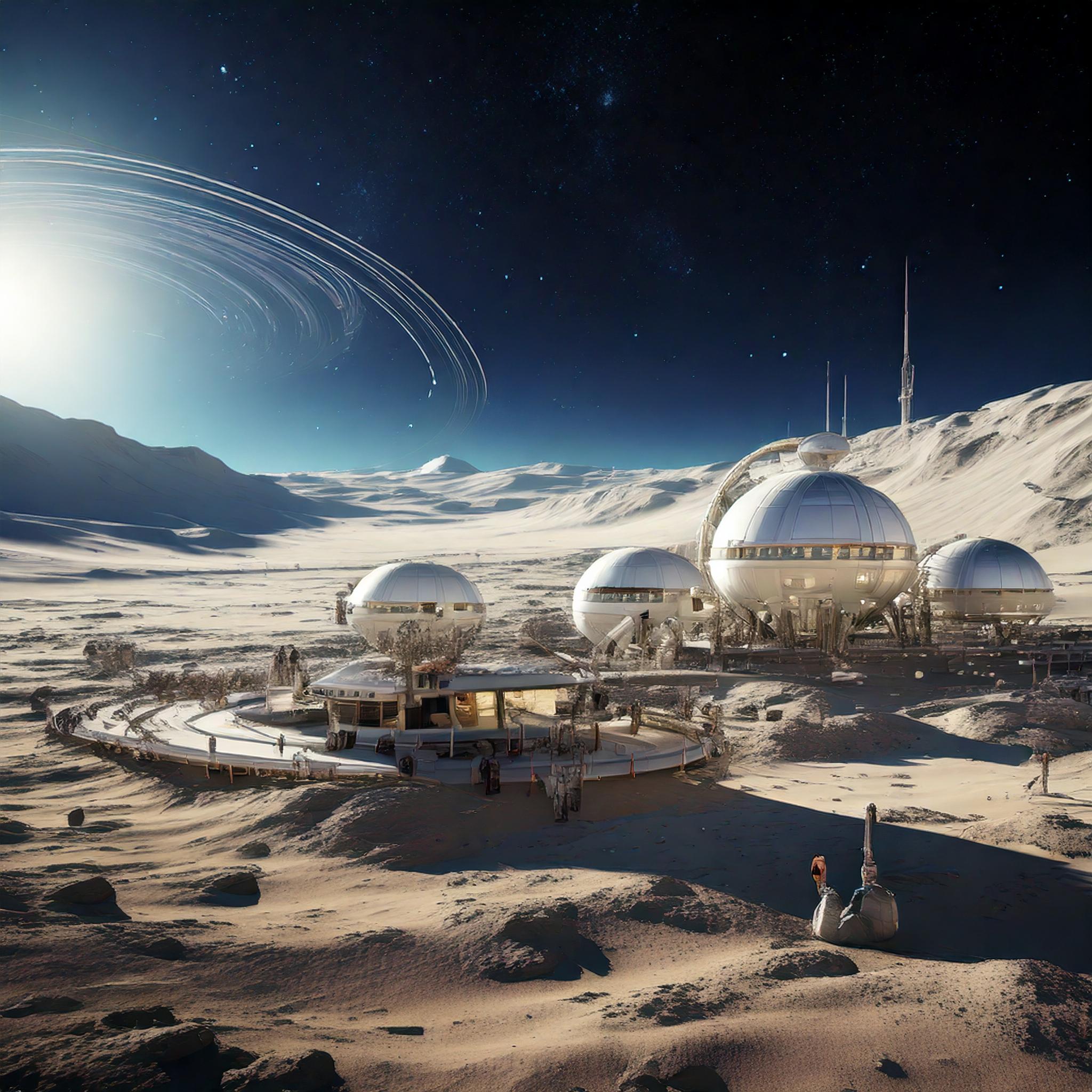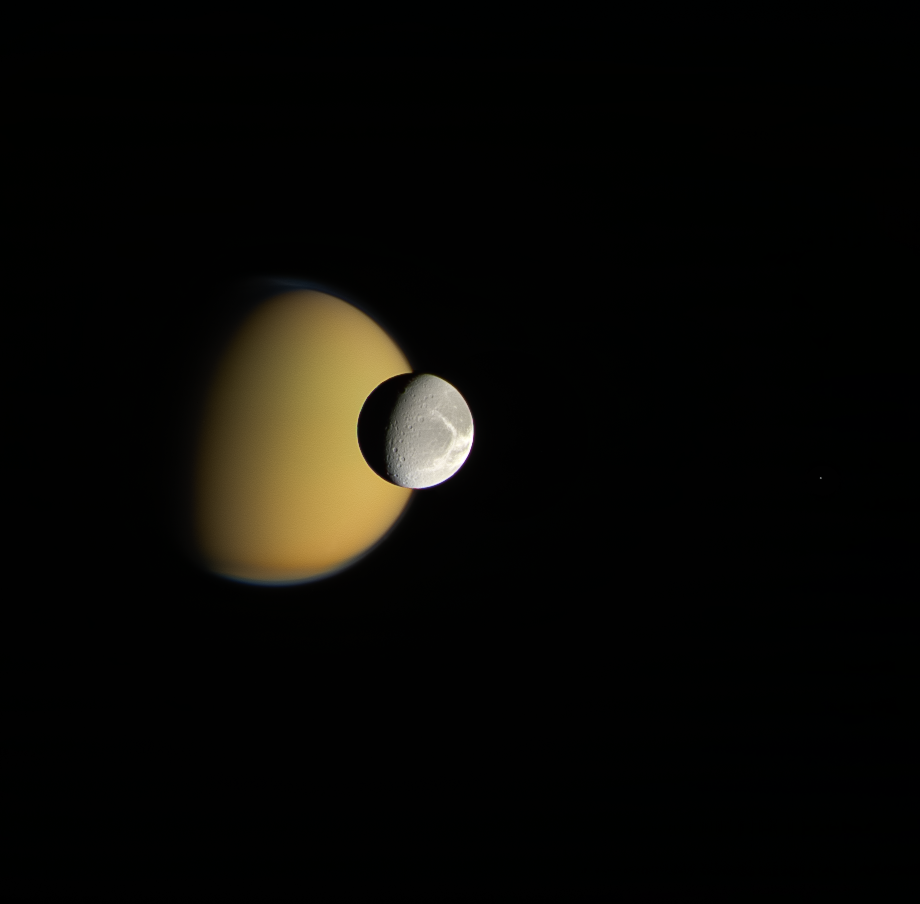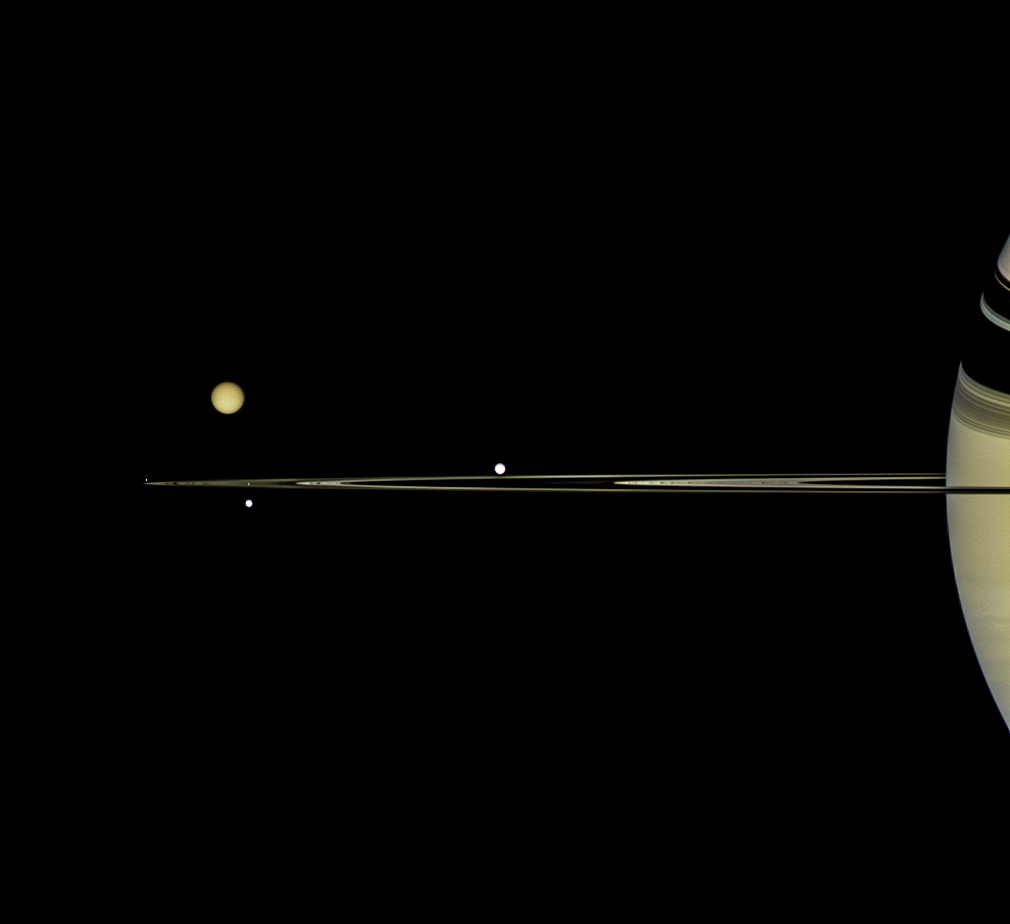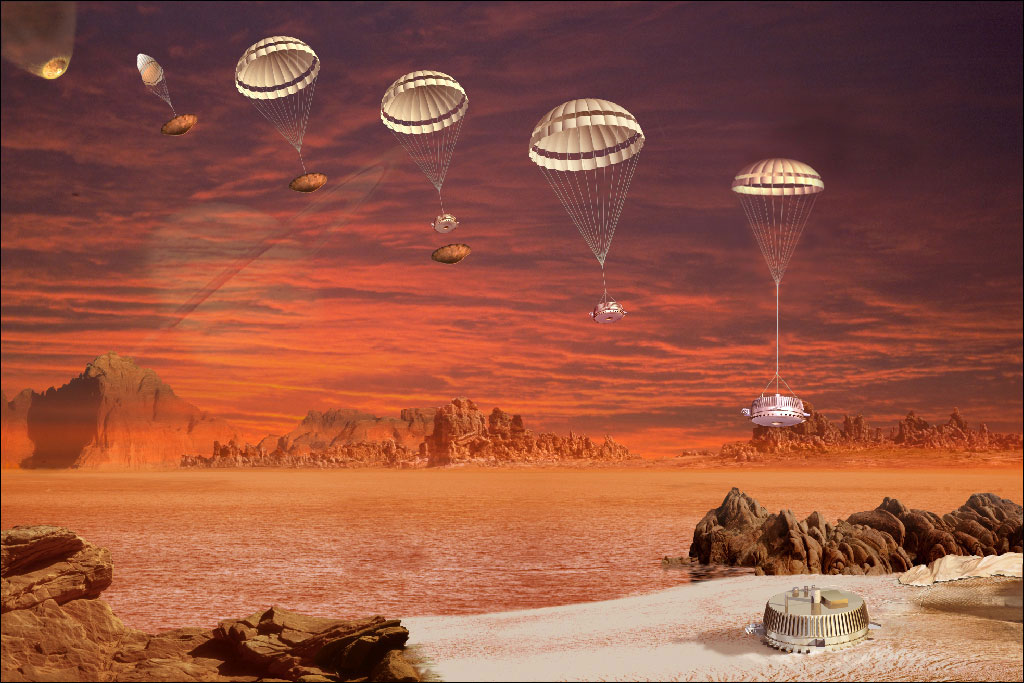Titan
Overview
| Location: | Titan orbits Saturn at ~1.2 million kilometers (745,000 miles) |
|---|---|
| Size: | Diameter: 5,150 kilometers (3,200 miles), making it the second-largest moon in the solar system (after Ganymede). |
| Surface Temperature: | −179°C (−290°F) on the surface |
| Athmospheric Composition: | 98% nitrogen / Trace amounts of methane (1.4%) and other hydrocarbons |
| Athmospheric Pressure: | ~1.5 times that of Earth’s (similar to being underwater at 5 meters or 15 feet) |
| Orbital Duration: | 16 days |
| Named After: | Titan (primordial deities in Greek mythology) |
| Remarks: | Titan’s complex organic chemistry and potential subsurface water ocean make it a strong candidate for extraterrestrial life. NASA plans to launch the Dragonfly drone in 2027, aiming to explore Titan’s surface and study its habitability by 2034 |
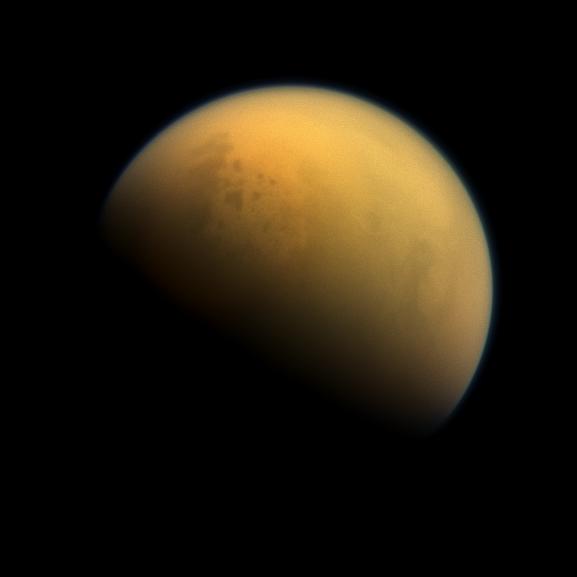
Overview
Titan, Saturn’s largest moon, is a fascinating world and one of the most Earth-like bodies in the solar system. Discovered by Christiaan Huygens in 1655, Titan is the second-largest moon, even exceeding Mercury in size. It is unique for its thick nitrogen-rich atmosphere, the only moon in the solar system to possess such a feature. Titan’s surface is diverse, featuring vast methane and ethane seas, river channels, icy mountains, and hydrocarbon-rich sand dunes.
The temperature on Titan is frigid, around −179°C (−290°F), but its surface and subsurface harbor signs of dynamic processes. It experiences a methane cycle similar to Earth’s water cycle, with methane rain, rivers, and lakes. Beneath its icy crust, scientists believe a global ocean of liquid water exists, making Titan a strong candidate for extraterrestrial life.
Explored extensively by NASA’s Cassini mission and the ESA’s Huygens probe, Titan will soon be revisited by NASA’s Dragonfly mission, which aims to study its chemistry and potential habitability. Titan stands as a beacon of scientific curiosity, a world that mirrors Earth’s early conditions and continues to intrigue humanity with its potential secrets.
Imagining a Colony on Europa
A Titan colony might resemble a network of domed cities connected by enclosed tunnels. Outside, vehicles and robotic systems would work in the harsh environment, while inside, a thriving community would focus on self-sustenance and exploration. The dim orange sky and vast methane lakes would create an alien yet strangely familiar landscape—a blend of technology and survival amid the wonders of Titan.
Environmental Challenges
Colonizing Titan presents a number of significant environmental challenges due to its extreme and unique conditions. Here are the key challenges that would need to be addressed:
- Extreme Cold: Titan has an average surface temperature of about −179°C (−290°F), which is far colder than any place on Earth. This extreme cold would make it nearly impossible for human life and Earth-based technologies to function without significant insulation and heating.
- Thick, Nitrogen-Methane Atmosphere: The Atmosphere and lack of Oxygen pose challenges for human physiology in outdoor environments. Colonists would have to live in pressurized habitats with artificial air mixtures.
- Harsh Radiation Environment: Although Titan’s thick atmosphere provides some radiation protection, it is still exposed to cosmic radiation and solar wind, which could be harmful to both humans and electronic equipment over time.
- Methane and Hydrocarbon Hazards: Titan’s atmosphere contains large amounts of methane and ethane, which are highly flammable, especially in the presence of oxygen. Methane rain and lakes also present a fire hazard.
- Low Light and Long Days: Titan is far from the Sun, so it receives only about 1% of the sunlight Earth does. This creates a very dim, orange-hued environment, which might affect human circadian rhythms and make solar power impractical.
Possible Colony Design
A possible colony on Titan would likely have the following features:
- Pressurized Habitats: Domes or underground structures designed to withstand Titan's extreme cold (−179°C) and thick, nitrogen-rich atmosphere. They would provide breathable air, warmth, and protection from methane and ethane.
- Methane and Hydrocarbon Use: Harvesting methane from the atmosphere and lakes for fuel to power generators and other systems.
- Hydroponic Farms: Greenhouses using artificial lighting to grow crops and produce food, along with lab-grown meat or insect farming for protein.
- Water Extraction: Harvesting water ice from Titan’s surface and recycling it for drinking, oxygen, and agricultural use.
Functionality and Purpose
A colony on Titan would not just be a scientific outpost; it would be a testament to human ingenuity and the drive to explore the unknown. Living on Titan would be an entirely new experience, shaped by the need for self-sufficiency, innovation, and adaptation to a hostile environment. The colony would serve as a stepping stone for further exploration of the outer solar system and could offer insights into the possibility of life elsewhere, as Titan’s organic chemistry is remarkably similar to early Earth’s.
Commercial and Industrial Exploitation
itan, with its unique resources and environment, offers several potential commercial exploitation opportunities. Here’s a list of its most valuable commercial prospects:
- Chemical Production: Methane could be used as a raw material for producing plastics, fertilizers, and other chemicals.
- Fuel Production Stations: Titan's atmosphere and liquid seas are rich in methane and ethane, which could be harvested and refined into fuel for spacecraft, power generation, and other industrial processes.
- Spacecraft Construction: Titan's hydrocarbon resources could be used in manufacturing space components, such as plastics or lightweight materials, reducing the need to transport materials from Earth.
- Satellite Communications Infrastructure: Titan's large size and location make it an ideal candidate for hosting communication relays and satellite infrastructure, potentially enabling improved communication systems within the Saturn system and beyond.
Titan Sounds
Every Here are two Audio files by the ESA. They have been recorded by Huygens Atmospheric Structure Instrument (HASI), which includes an acoustic sensor, during Huygens' descent, 14 January 2005.
- Speeding through Titan's haze This recording is a laboratory reconstruction of the sounds heard
by Huygens' microphones. Several sound samples, taken at different times during the descent, are here combined together
and give a realistic reproduction of what a traveller on board Huygens would have heard during one minute of the descent
through Titan's atmosphere.
- Radar echos from Titan's surface This recording was produced by converting into audible sounds some
of the radar echoes received by Huygens during the last few kilometres of its descent onto Titan. As the probe approaches
the ground, both the pitch and intensity increase. Scientists will use intensity of the echoes to speculate about the
nature of the surface.


